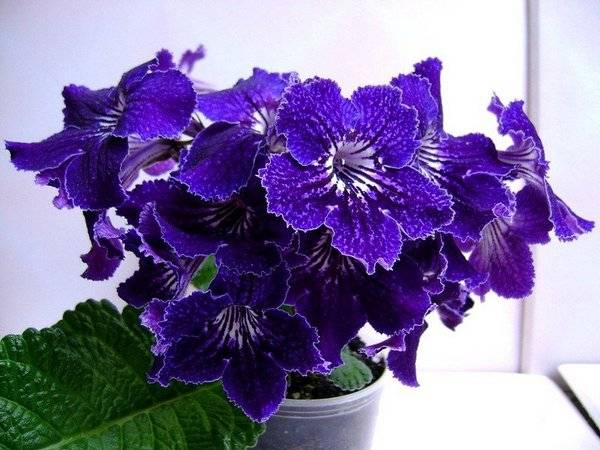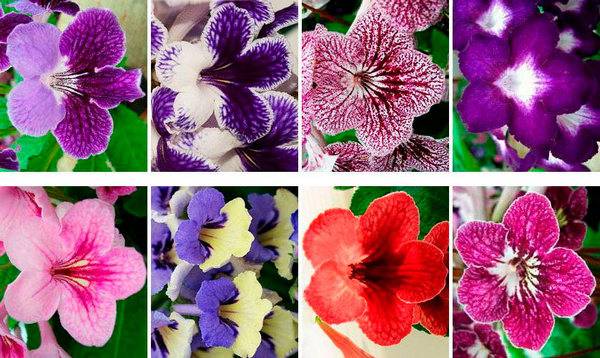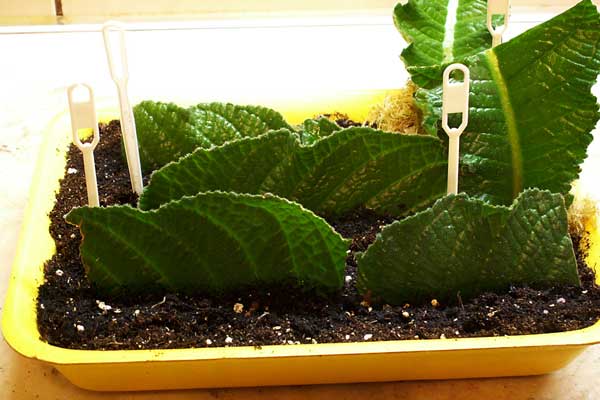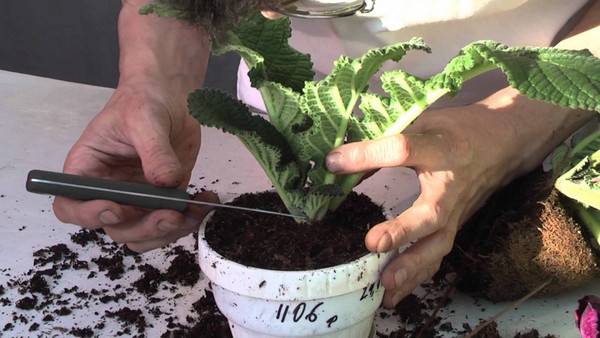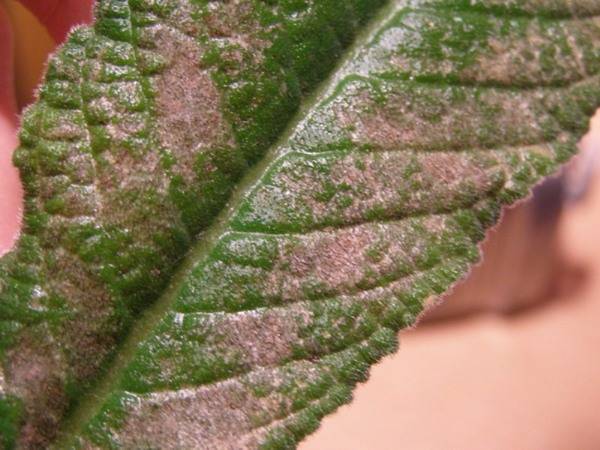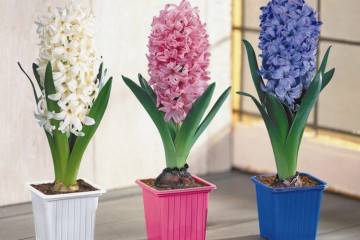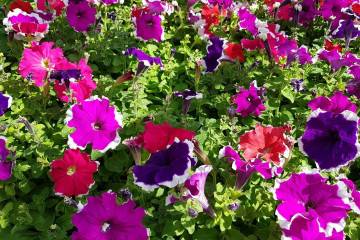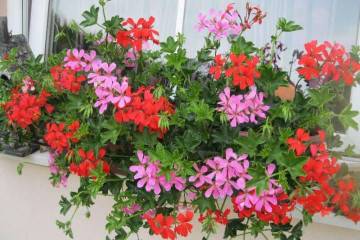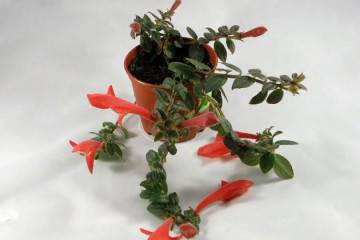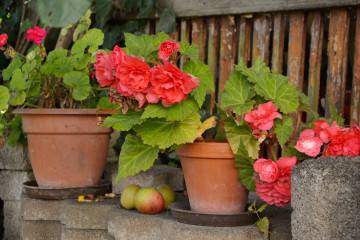Streptocarpus - care and cultivation at home
Content:
The most beautiful indoor plants include the Streptocarpus flower. It is known for its unusual petal colors and patterns. Compliance with the rules of care will allow you to get a beautiful bush that will delight its owner with bright buds for six months.
What does streptocarpus look like, which family does it belong to
The exotic culture is a representative of the Gesneriaceae family. It was discovered in South Africa in the 19th century by J. Bowie. The plant immediately entered the collection list of the British Museum because of its extraordinary appearance.
Streptocarpus belongs to rosette varieties, has variegated or green foliage. The stem is short, the leaf plates are broadly lanceolate, strongly pubescent. The fruits look like a spiral long capsule.
In nature, it prefers to grow in wooded areas located on mountain slopes. At home, with proper supervision, it will feel good too.
Common varieties
The most famous are:
- Rex or Royal. He was the first to be found. Differs in pubescent foliage of an elongated shape and 25 cm long. The buds have a variety of shades: snow-white, pink, purple and red. The petals are decorated with patterns.
- Fake Violet or Rocky. It can be grown as an ampelous subspecies or a shrub. On thin and long stems there are rounded leaves, the buds are painted in a pale purple tone.
- Wendlandu is a unifolia plant. Its leaf plate is large and velvety. On a separate stem, pinkish buds are located.
Streptocarpus: care and cultivation
Caring for streptocarpus at home is not difficult even for beginners in floriculture. With the exact implementation of all the recommendations specified in the description, you can get a healthy and regularly flowering bush.
Temperature and lighting
In the season of active bud formation, preference is given to a temperature regime from +20 to +25 degrees. During the rest period, the culture prefers coolness - from +15 to +18 degrees.
Culture needs diffused lighting. In the summer, the flower can be taken out to the loggia or balcony. This will help speed up bud setting.
Watering and spraying
When growing streptocarpus on a windowsill, it is recommended to slightly overdry the soil, rather than excessively waterlogging it. The delicate root system begins to rot when the fluid stagnates. Watering is carried out after the top layer of the earth has dried, in winter it is reduced to reasonable limits.
The culture prefers high moisture readings. To create the perfect atmosphere, you need to purchase a humidifier or put an aquarium and a container of water next to the pot. Spraying air is allowed, but not bushes. Water ingress on leaf plates and petals leads to the formation of brown spots and decay.
Soil and dressing
The substrate for streptocarpus must meet the following requirements: be light, loose, non-acidic, breathable. You can make the mixture yourself. To do this, you need to take 2 parts of leafy land, 1 part each of turf, sand and humus.
Experienced flower growers advise purchasing ready-made soil mixture for Saintpaulias. Before planting, sphagnum moss, crushed charcoal, vermiculite and perlite are added to it.
How can young streptocarp be fed:
- in spring - nitrogen fertilizers intended for ornamental species;
- when buds appear - potassium-phosphorus mixtures for varieties with flowers.
When and how it blooms
The buds appear abundantly and are brightly colored. They are formed even in children who have just begun to actively develop.
The standard bud diameter is 2 to 3 cm, but there are specimens up to 8-9 cm in diameter. The petals range in color from white to purple-purple or blue. The petals are decorated with a variety of lines and patterns.
Botanists distinguish several types of buds:
- drooping;
- umbrella;
- corrugated;
- with a deepened neck;
- resembling a violet.
Some subspecies are covered with buds all year round, but streptocarpus blooms more often in spring and summer days. The total duration is from 6 to 9 months.
Why does not it bloom, what to do to start blooming
In the absence of flower formation, it is necessary to revise:
- lighting - transfer the container to the windowsill;
- watering - less often;
- top dressing - add an additional mixture.
The culture, even at the moment of budding, does not need additional irrigation or feeding. It is enough to follow the standard schedule and move it closer to the light, not forgetting the need for shelter from direct sunlight. This approach will increase the budding time.
How streptocarpus reproduce
How can you propagate streptocarpus at home? There are several options. Young seedlings can be grown from any part of the mother plant, it is enough to root it.
Germinating seeds
Streptocarpus from seeds at home can be propagated without much effort. In a short time after planting, they germinate and take root well. The only feature is the lack of transfer of hybrid properties to young plants. Therefore, the planting material must be bought in proven places.
Reproduction takes place according to the scheme:
- pre-prepared soil is abundantly moistened from a spray bottle, sent to the greenhouse;
- seed material is not buried, but scattered over the surface;
- containers are exposed closer to the sun;
- the greenhouse is covered with a lid;
- aired daily for 15 minutes.
Rooting cuttings, leaves, leaf fragments
Streptocarpus can be propagated by dividing an adult bush with several outlets. Each of them must have a growing point and root system.After watering, the bush is removed from the container and divided into several parts. The sections are sprinkled with coal powder, the resulting seedlings are planted in different containers. They look after them according to the standard scheme.
When streptocarpus is propagated by leaf fragments, a middle-aged plate should be taken and cut according to the scheme:
- across - into 2 parts;
- along - into 2 parts;
- the central vein is cut out.
You need to plant the shares with a cut down, in mini-greenhouses. The first shoots will appear in 2 months, then they can be fed.
Transplant after purchase and during reproduction
A good time for transplanting is the beginning of spring, when the culture is just beginning to grow actively. With a winter planting, it will be more difficult for her to root.
After purchase, the bush is carefully examined. With an overgrown root system, it must be transplanted into a new, more voluminous container. After the procedure, the first fertilization is carried out after 2 months. The soil must be regularly loosened and watered (as the upper layers of the substrate dry).
Possible problems in growing streptocarpus
The main problematic and weak points of culture are diseases of leaf plates, attacks of parasitic insects. Most of the pathologies are associated with a violation of the rules of agricultural technology:
- The leaves turn pale. Blanching is recorded with insufficient intake of nutrients or strong growth of the bush. The best solution to the problem is transplanting and adding a special nutrient mixture.
- The tips of the leaves dry. Drying is observed with excessively dry air or a tight container. The tips of the plates will stop drying after transferring the bush to a new container and normalizing the humidity in the room.
- Leaves fall. The lethal heat causes lethargy and shedding of foliage. The culture should be moved to a colder room with diffused lighting. Remove damaged plates.
Pests
The appearance of thrips, aphids, spider mites and scale insects is associated with increased dryness of the indoor air. If parasitic insects are found, it is necessary to increase the humidity, carry out treatment with insecticides. Experienced growers prefer to use Fitoverm. With its help, you can destroy various types of parasites. The solution is considered less toxic than similar drugs.
Other problems
The tropical origin of the culture requires its own characteristics: it needs light and airy land, sufficient drainage and the absence of stagnant water. With constant overflows, the root system of the bush will begin to rot, it will stop throwing out children and form buds.
Domestic specimens are often affected by a variety of fungal infections. The list includes rust, rot and powdery mildew. Pathology develops due to improper supervision: constant fluid stagnation or temperature violations. In order to avoid active reproduction of diseases, it is necessary to carry out regular inspections of the plant and timely spray the affected bushes with fungicidal solutions. All damaged areas are removed before irrigation.
Streptocarpus is famous for its unpretentiousness, but leaving it on the windowsill and occasionally watering it will not work. He needs a certain temperature, humidity, feeding and diffused lighting with a maximum duration of daylight hours.
